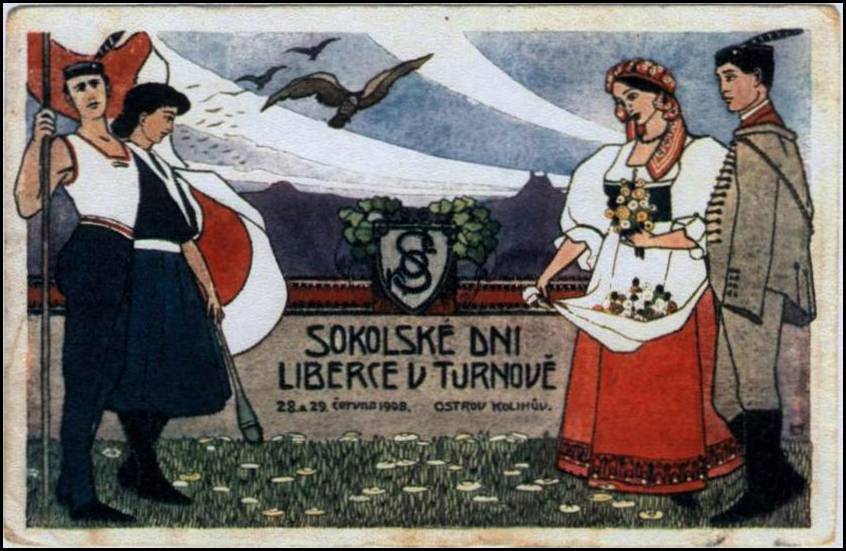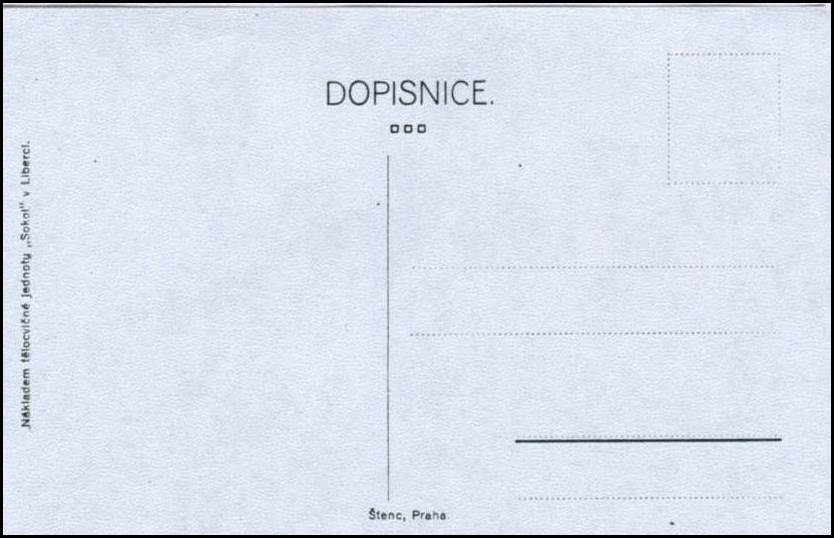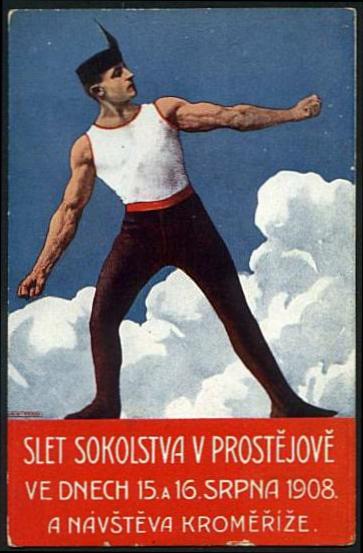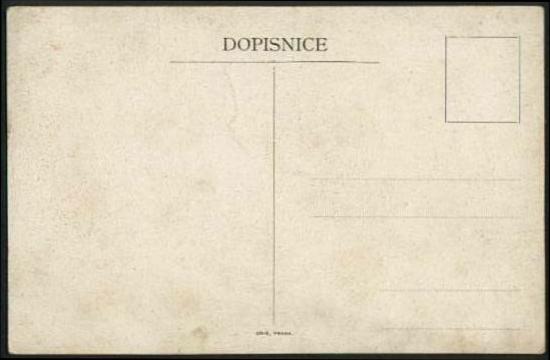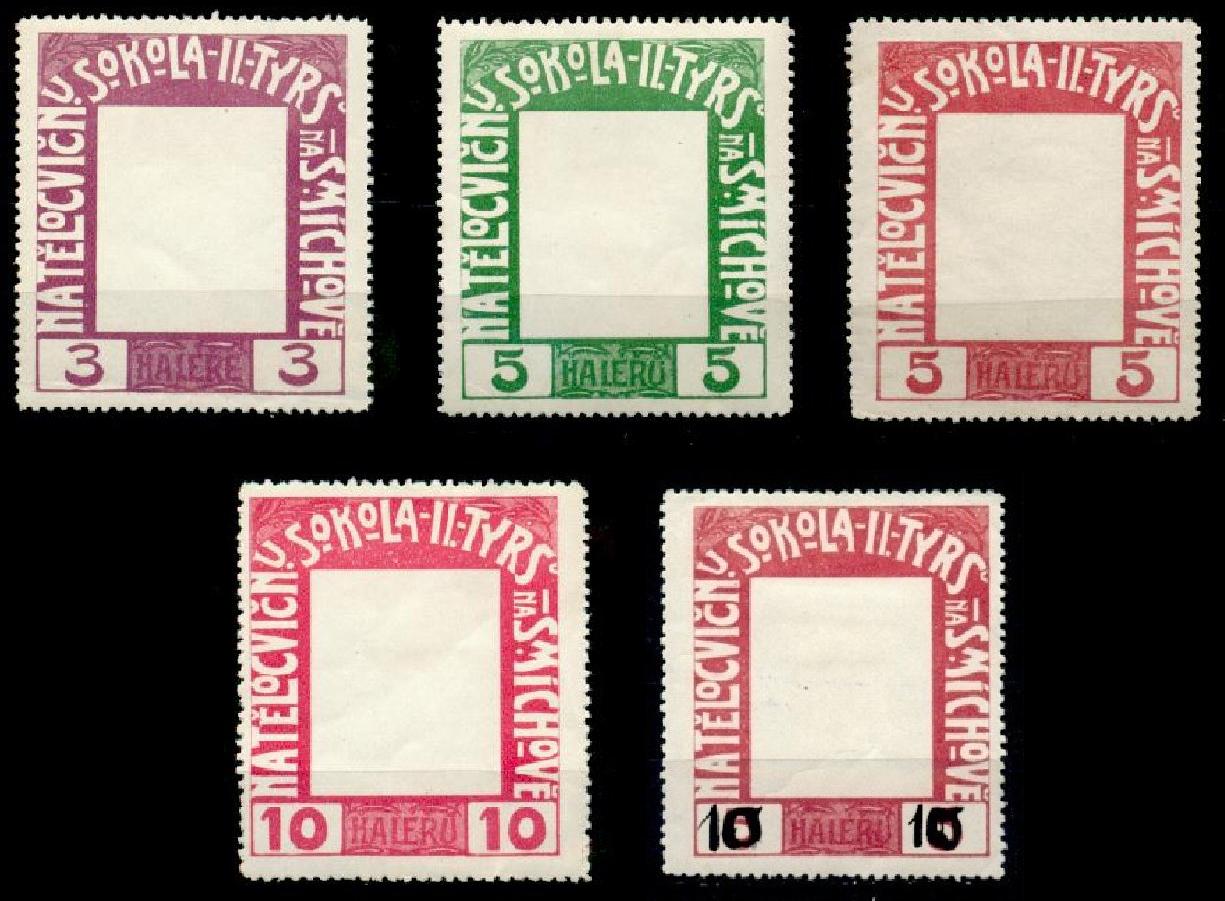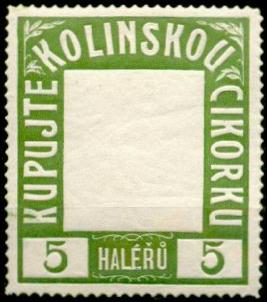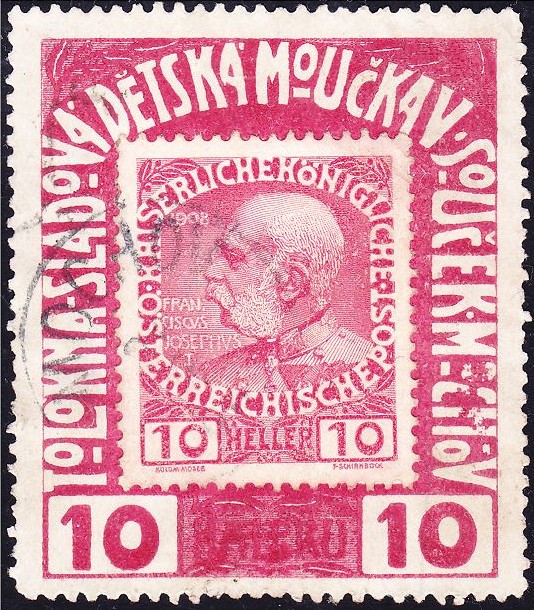
|
Introduction
1882 - I |
SOKOL POSTCARDS
1908
(Click on any image to view an enlarged version)
Postcard of the Liberec Sokols days in Turnov, 28-28 June 1908.
Local Slet in Prostejov, August 15-16, 1908
Note the similarity between this card and the one showing the poster for
the 1907 V Slet in Prague - both obviously by the same artist and printer.
The printer is UNIE-PRAHA, but the artist is not credited on either card.
Fortunately, we know that the artist for the 1907 poster was Karel Šimůnek,
a prolific Czech artist and illustrator, so we can say he did this one too.
HERE is one actually used on a cover. Nice!
The inscription around the border of the label translates
"For the gymnasium of Sokol II Tyrš in Smichov".
Below, two very similar labels, but with advertising!
1. "KUPUJTE KOLINSKOU CIKORKU" = Buy Kolin Chicory
2. "TOLOKNA SLADOVA DETSKA MOUCKA - V SOUČEK, MOCHOV" =
Tolokna Baby Cereal, V. Soucek, Mochov
Which came first, the ads or the protests?
Are there other labels like this? Please send images.
HERE is a page from an April, 1908 Czech newspaper with an
ad for Tolokna - "Builds Healthy Blood and Strong Bones!"
Stamp collars
were popular at the time in Europe, especially in France (where they were called
"porte timbres"),
usually for patriotic or charitable messages. One received them in return for a donation
to the cause, then used them either alone, or with a postage stamp added. The center,
where the stamp was to go, was sometimes totally blank, but usually bore a simple
message either supporting the organization selling them, or explaining their use.
The border contained a message to surround the postage stamp and promote the cause.
In the US, stamp collars were printed on envelopes, usually as advertising,
hence were called "Advertising Collars."
Another web page about Czech stamp collars -
Podlepka : what is it ?
|
1929 1930 1931 1932 - IX 1933 1934 1935 1936 1937 1938 - X 1939 1943 - London 1946 1947 1948 - XI 1948 - Rudé Právo labels 1951 1989 1990 1994 - XII 1996 UNDATED |
Home
Send feedback to the webmaster: CLICK HERE
Created -- 10/25/2005
Revised -- 08/21/2018

